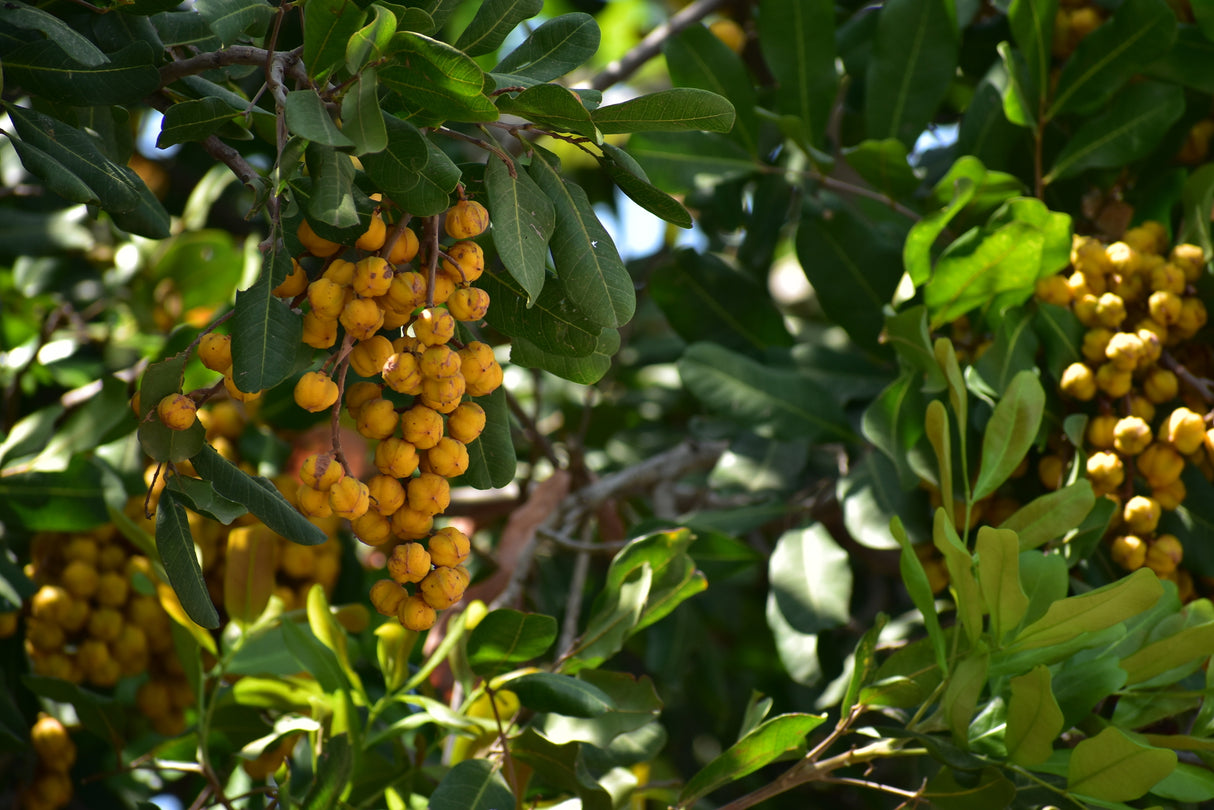Cupaniopsis anacardioides
The Cupaniopsis anacardioides, or Tuckeroo, is a hardy evergreen tree native to Australia, valued for its dense, rounded canopy of glossy green leaves and its adaptability to a wide range of conditions. Growing up to 8–15 meters tall, this low-maintenance tree produces small, yellow-green flowers in spring and summer, followed by decorative orange fruit that attracts birds. Its non-invasive root system and compact growth make it ideal for urban planting, coastal gardens, or as a street tree.
Tough and versatile, the Tuckeroo thrives in coastal environments and urban landscapes, offering shade, structure, and ecological benefits.
Specifications:
- Height: 8–15 meters
- Width: 6–10 meters
- Native to: Australia
- Foliage: Glossy, dark green leaves; evergreen
- Growth rate: Moderate
Conditions:
- Soil: Prefers well-drained soils; tolerates sandy, loamy, and clay types
- Light: Full sun to partial shade
- Water: Low to moderate; drought-tolerant once established
- Climate: Thrives in temperate, subtropical, and coastal regions
Additional Features:
- Flowers: Small, yellow-green blooms in spring and summer
- Fruit: Decorative orange capsules attract birds and wildlife
- Uses: Ideal for street planting, coastal gardens, shade, or as a feature tree
- Spacing: Plant 6–8 meters apart for street or avenue planting
- Low Maintenance: Requires minimal care; prune lightly to maintain shape
- Pest Resistance: Generally pest-free and resilient
- Drought Tolerance: Performs well in low-water and coastal landscapes
- Wind and Salt Tolerance: Suitable for exposed coastal locations
- Wildlife Attraction: Provides food and habitat for birds and pollinators
The Tuckeroo is a versatile and resilient tree, perfect for creating shade, supporting wildlife, and adding structure to both urban and coastal landscapes.
The Benefits Of Buying An Advanced Tree
The Process Of Transplanting A Mature Tree
Identify the Tree's Root Zone
Identify the Tree's Root Zone
Before you begin, it's essential to identify the root zone or root ball of the tree. This is the area where the majority of the tree's feeder roots are located. It is typically estimated as 1 foot of root ball diameter for each inch of tree trunk diameter.
Prune the Roots
Prune the Roots
Root pruning should occur a few months before the actual move, ideally in the dormant season. This involves cutting a trench around the root zone to encourage the growth of new feeder roots, which will help the tree to establish itself in its new location.
Prepare the Tree
Prepare the Tree
Prior to digging, prune dead or excessive branches from the tree. This reduces the tree's overall mass, making it easier to handle, and decreases water loss post-transplant.
Dig Around the Root Ball
Dig Around the Root Ball
After determining the root ball's size, begin digging around it. Try to retain as much soil around the roots as possible. The depth should ideally get under the root system but be feasible for lifting.
Undercut the Root Ball
Undercut the Root Ball
Once you've dug around the periphery of the root ball, begin undercutting to sever the remaining roots beneath it.
Lift the Tree
Lift the Tree
With the root ball freed, carefully lift the tree out of the hole. For large trees, this will likely require machinery like a tree spade or crane. Always lift the tree by the root ball, not the trunk.
Prepare the Tree for Transport
Prepare the Tree for Transport
Once the tree is out of the ground, it's critical to protect the root ball to prevent damage. Wrap it in burlap and secure it with twine, wire or steel basket. This not only holds the root ball together but also helps retain moisture.
Water the Root Ball
Water the Root Ball
Prior to transportation, water the root ball thoroughly to ensure the roots stay moist.
Transporting the Tree
Transporting the Tree
Load the tree carefully onto a truck or trailer for transport. The tree should be securely positioned to avoid damage during transit. The tree should ideally be planted in its new location as soon as possible to minimize stress and increase its chance of survival.


